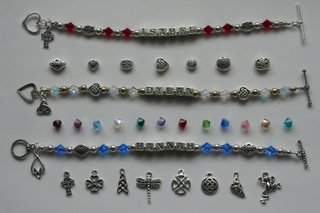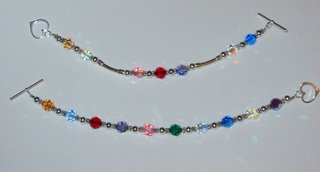
CELTIC CROSS
The
Celtic Cross had it's evolution in the British Isles, with it's earliest form dating to approximately the ninth century and appearing mostly in Ireland. This early version is called a recumbent cross-slab, and they lied flat rather than standing upright. Eventually these made their way into an upright position (now called erect cross-slabs), and acquired a slightly rounded top. Both versions were often decorated with key patterns, interlaced knotwork, and spirals.
The
Celtic Cross then underwent another change. Extraneous rock was carved away from the head of the slab, leaving the rock with the outlined shape of a tall cross, usually on a wider base. Because the cross form was in effect "freed" from the rock now, these types of crosses were commonly called erect free-standing crosses. From these, the arms of the cross eventually became extended beyond the ring of the cross, and the inner quadrants between the rings and the arms were cut away or recessed from the rest of the cross design. The free-standing crosses were elaborately made, and often composed of several pieces of stone. A large cross could have been made of up to four pieces of stone (the base, the shaft, the head, and the upper cross arm), held together by mortise and tenon joints carved into the stone.
An Irish legend tells how St. Patrick created the first Celtic Cross by drawing a circle over a Latin cross to incorporate a pagan moon goddess symbol. For an Irish Catholic, the circle in the Celtic Cross may be a symbol of eternity and the endlessness of God's love. It can even represent a halo emanating from Christ.
The
Celtic Cross and Irish cross shape itself has been widely used by many ancient peoples, long before the arrival of Christianity. Its four arms were perfect for denoting the four elements, the four directions of the compass, and the four parts of man - mind, body, soul and heart. The addition of the ring around the cross has had many explanations, everything from sun worship and symbolism, to creating a shape with the cross that was well contained and aesthetically pleasing.
My Celtic Treasures carries about
35 different styles of the Celtic Cross. No doubt there are hundreds more. Counties, parishes, regions, clans and families designed and adopted their own versions.
This item makes a fantastic addition to any jewelry collection and a great gift. To order one, click on the title at the top of this posting or visit
My Celtic Treasures.
As always, free shipping.
Please "comment" with other interpretations as you know them.










